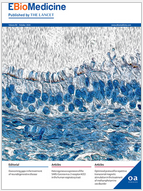 Pompe disease is linked to mutations in the GAA gene, which encodes an enzyme involved in the degradation of glycogen into glucose. It results in overload myopathy and, very often, restrictive respiratory failure. So far, mouse models developed in the laboratory by inactivating the GAA gene show only a moderate disease phenotype, with relatively spared respiratory function.
Pompe disease is linked to mutations in the GAA gene, which encodes an enzyme involved in the degradation of glycogen into glucose. It results in overload myopathy and, very often, restrictive respiratory failure. So far, mouse models developed in the laboratory by inactivating the GAA gene show only a moderate disease phenotype, with relatively spared respiratory function.
Researchers from Genethon have just published an article on the first mouse model exhibiting a severe phenotype of the disease which associates muscle weakness, locomotor damage, cardiac hypertrophy, severe early respiratory damage and early mortality. This mouse model, which does not express the GAA gene, was developed by crossing two types of mice and acting on the Ltbp4 gene, a gene known to modify the severity of dystrophies in mice.
The researchers then treated the 2-month-old mice with a gene therapy approach that targets the liver to secrete a modified form of GAA that will then distribute to other tissues. Three months after administration of the treatment, GAA activity was restored in muscle and nerve tissue with improved muscle strength and also respiratory function.
A clinical trial with this gene therapy conducted by pharmaceutical company Sparks Therapeutics, which entered into a licensing agreement with Généthon in 2017, is in preparation in 20 adults suffering from a moderate late form of Pompe disease, treated for at least two years by enzyme replacement therapy.
